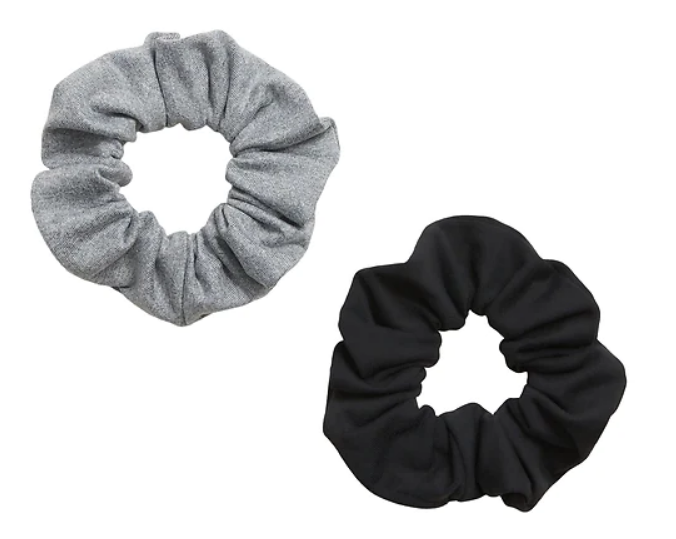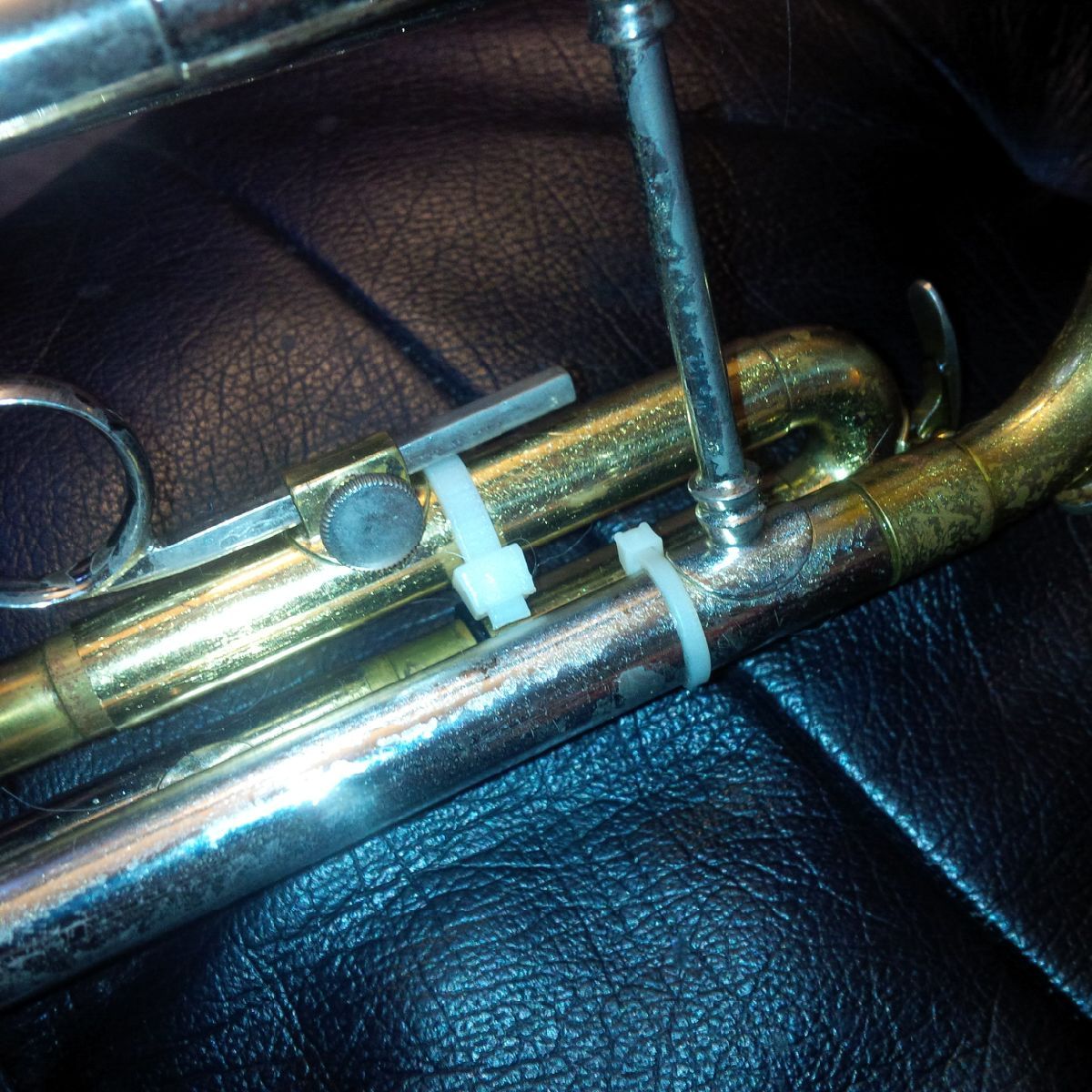King Silver Flair - Buying Advice
-
I'm just starting out learning the trumpet, but an instrument caught my eye - the King Silver Flair 1055T. I have done a bit of research, and apparently it was the top pro model for King from 1964 to 1979. So, I've seen one for sale, but have no experience in buying a used trumpet, so I thought I had better get some advice.
Two things spring to mind - There is no 1st valve slide hook. Is it supposed to have one? If not, how does one operate the slide during playing?
The other thing is, one of the buttons is not original. I was wondering why this could be. Is it common for them to be damaged? If the button has had a knock, could the valve be damaged too? Also, it appears to be the middle button - so I would expect that one to be less likely to be knocked. I thought I'd ask here before I put this question to the seller.
Here's a link to the listing: https://www.ebay.co.uk/itm/Vintage-king-silver-flair-trumpet-Pre-UMI/154306356346
I look forward to hearing from more experienced eyes. Thank you for looking!
-
Don't buy any vintage horn if you are a beginner. (Unless an experienced player tells you it is OK.) Leave the antiques to people who have dealt with them for a long time. Get a nice, slightly-used, fairly new, student model Yamaha or Jupiter. I know that isn't very cool, but it will serve you better.
Also, you won't need the first slide saddle or trigger for a long time. -
@newell-post Thanks Newell, I probably won't buy it anyway. And I did get a Yamaha, which arrived a few hours ago haha. But out of curiosity, what's the deal with the first slide saddle on that one? Do all trumpets not have them?
-
@trumpetlearner
The one you show in the listing has what is known as a first valve slide trigger for moving the slide in and out. But a lot of early vintage horns ( my 1952 Selmer Paris, as an example ) didn't have first slide finger saddles or triggers. -
My first horn was a Selmer Radial. I don't see anything wrong with vintage horns as a first horn, so long as it's not a peashooter.
-
@trumpetlearner When you use the valves in combination, the notes tend to become sharp. This is most pronounced on the 1-2-3 notes of low C# and low F#, but it also happens on other notes. On almost all trumpets, the third valve slide can be extended with the finger ring or trigger to to lengthen the tubing and flatten the note to be in tune. It's sort of like a miniature trombone slide, just for fine tuning purposes. The saddle or trigger on the first slide does the same thing, but you need it much less often on the first valve slide than on the third.
-
Ok, so I managed to find a video of a 1st valve slide trigger. So, it basically does the same job as a saddle, it just operates in a slightly different way.
1st day of having a trumpet has passed and my lips feel swollen today! Think I must have been pressing the mouthpiece too hard against my mouth.
-
@trumpetlearner Good observation. You should use as little pressure as possible.
-
@trumpetlearner
It isn't just too much pressure you have to be careful of, but over use of the lips can lead to a lip injury.I am 84 and my chops aren't the same ones I played with back in the 50's/60's where playing a 3 hour gig was doable. These days I have to be careful of over playing. I did a 2 hour concert once with a lot of difficult ( range-wise ) material and the next day I was blowing dead air. The muscles around the chops had been damaged and were swollen. It took 3 days of applying ice packs to the chops before I could blow notes again properly.
Be careful, your virgin lips are vulnerable. If you play 5 minutes, rest five minutes. Take your time. What's the rush ? Take a good breath from deep down inside and use the stomach muscles to support the air. Blow soft, like you would if you were blowing out a candle. Play lots of long tones consisting of whole notes and half notes. Make the C in the middle of the staff an objective, but don't push it. Work your way there slowly, note by note.
And pay attention to you posture. Practice breathing with shoulders down and chest out, holding the horn with elbows pointing slightly away from the body
Good luck.
George -
@georgeb Thanks for the advice George - I'll be trying all of the things you suggest. I've been practicing in small bouts of 5-10mins, and things are progressing nicely. I do find it difficult to play a crystal clear note, without any air sound. I'm making small adjustments to my embouchure in order to fix this. Range-wise, I can comfortably play up to the G above middle C, and I find those notes tend to be clearer than the lower ones. I've managed to hit as high as G above high C, but it wasn't with any finesse or good technique - simply the childish temptation to see how high a sound I can make out of my new toy hahaha.
-
@trumpetlearner What do you call middle C?
-
@j-jericho So, I was counting Low C as the lowest note on the open harmonic scale, the one above that as 'middle', the next one as 'high', and I expect the one after that is what people call 'double-high C'. Although it does seem that people refer to different notes differently.
-
It Is pretty unusual for someone new to playing the trumpet to play a G ( first space above the staff ) let alone hitting a G above high C. When I started my comeback after a 50 year break, it too me 3 months to get to a point where I could play G above the staff comfortably.
Are you sure you are playing those actual notes ? What fingerings are you using for the D, E and F above high C ? Identifying how those high notes actually sound would be amazing for a newcomer unless they have an amazing ear. I'm not saying it's impossible, but you may be mistaking exactly what those high notes actually are .
-
@georgeb I actually had an online lesson with a really great teacher. Well, it's hard for a complete novice to know whether a teacher is good or not, but let's just say it was the right fit for me, as things were explained in a way that I could understand easily, and there was plenty of theory discussed.
So, I had the lesson 2 days after laying eyes on a trumpet for the first time, and during the lesson I managed to hit that G (first note above the staff). Obviously it was an accident - after playing the low C and next G up, I was asked to give the next C a shot (3rd open harmonic) and I over-compensated and fired as hard as I could, getting 2 harmonics above the intended note.
Although I had never touched a trumpet before last week, I had been studying videos on YouTube for 2 weeks, and had been using a visualiser to work on my embochure. Also, I don't think it's that impressive to get a high note if a) You have absolutely no control over the quality/volume of the note & b) You use such an awful technique that you nearly pop an eye out of your head!!
So, the notes up to the top of the staff have become more manageable since then. But the G above high C was a result of me deliberately making my aperture as tiny as possible, forcing as much air as I could into the mouthpiece, and pushing the trumpet up against my lips as hard as I could. I don't think I will be playing comfortably up there for a while.
Edit: About the fingerings above high C - I didn't touch the valves when I was trying this. I was simply forcing air into the trumpet. Oh, and you're right, I would not have been able to identify the notes by ear. I sit with a keyboard, and play back notes there, where I can recognise what they are. I do this all the time while playing the trumpet, as I need an audiable cue to start my first note accurately.
-
@trumpetlearner
That certainly explains a lot. But a word of advice: a good teacher would have you learning to play well on that staff rather than above it. I play first trumpet in one of the top community bands in Nova Scotia and I have never had to play anything higher than a B ( 2 spaces ) above the staff.One of things I get a lot of compliments on is my warm tone.
In other words, I would concentrate on developing a good playing style on the staff. Unless you intend to be a professional lead or jazz player, wearing your chops out on high notes really isn't necessary... especially at this stage of your learning.
Every morning I spend a little under an hour doing technical stuff and every day I play a 2 octave C scale . I often add D or an E to the high C just for kicks. But that's as high as I go and that will cover anything I have to play in the band. For my afternoon practice ( again, every day ) I play about a dozen or so ballads.
Good luck and be careful. Screaming above the staff can injure your chops.
Just my 2 cents, my friend.
George
-
@georgeb You are right. I am definitely going to focus more on getting a better sound, than trying to get higher notes. Thank you for sharing your advice and practice routine. I still have a long way to go!
-
Good man.
I, and some other professional level players here will answer any questions you may have.
Good luck, my friend,
George -
Rather than start a new thread, I have another question for anyone with a Silver Flair. My new Yamaha has a little screw to stop the 3rd valve slide falling out, but I don't see this on the silver flair. Is this a new thing for trumpets? What stops the slide falling out on a trumpet that doesn't have one of these?
When I leave my trumpet on its vertical stand for a few days, I do sometimes come back to find the 3rd valve has slid down to to the screw, and if the screw wasn't there, I suppose it would have fallen out completely!
-
I think the most common solution is to wrap a hair "scrunchie" between the second valve slide and the third valve slide finger ring, at least while the horn is sitting vertically on a stand. It can be extended to the first valve slide as well for travel. Other solutions include strings or shoe laces. Do not use bare rubber, as it will trash your silver.

-
And the LEAST common method is probably the one I use on my Connstellation. Two zip/cable ties added to adjacent pipes so that the "knobs" hit. It doesn't interfere with playing, and rotating one tie to move the knob enables slide removal for cleaning or draining.
